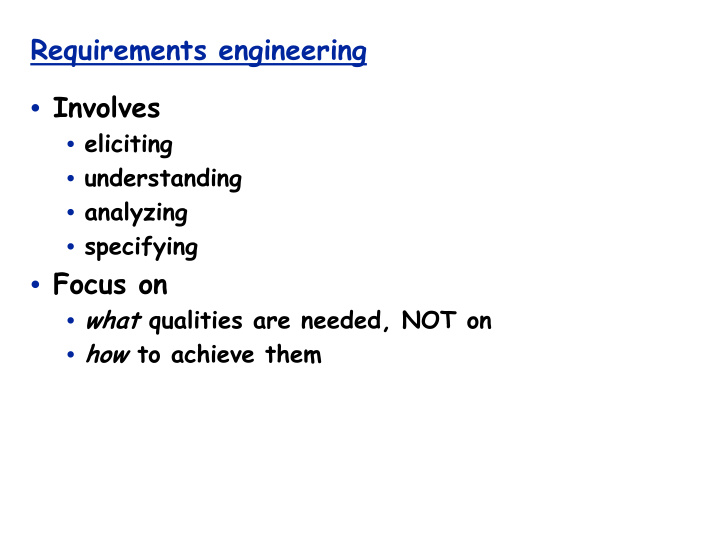



Requirements engineering • Involves • eliciting • understanding • analyzing • specifying • Focus on • what qualities are needed, NOT on • how to achieve them
What is needed • Understand interface between the application and the external world • Understand the application domain • Identify the main stakeholders and understand expectations • different stakeholders have different viewpoints • software engineer must integrate and reconcile them
The requirements specification document (1) • Provides a specification for the interface between the application and the external world • defines the qualities to be met • Has its own qualities • understandable , precise , complete , consistent , unambiguous, easily modifiable
The requirements specification document (2) • Must be analyzed and confirmed by the stakeholders • may even include version 0 of user manual • May be accompanied by the system test plan document
The requirements specification document (3) • As any large document, it must be modular • "vertical" modularity • the usual decomposition, which may be hierarchical • "horizontal" modularity • different viewpoints • Defines both functional and non functional requirements
A case study railway automation • Who are the stakeholders? • management of the train company • train drivers and their unions • passengers (customers) • contractors • Each has different goals
Case study how to classify requirements • Safety requirements • the probability of accidents should be less than 10 -9 per year • Utility requirements • level of usefulness of the system as perceived by the various stakeholders
Case study the produced document • Introduction: the “ mission ” of the system • Architecture: the main structure of the system • Specific requirements associated with each subsystem • discussion of how the subsystems ’ requirements guarantee that the overall goals are indeed achieved
Recommend
More recommend